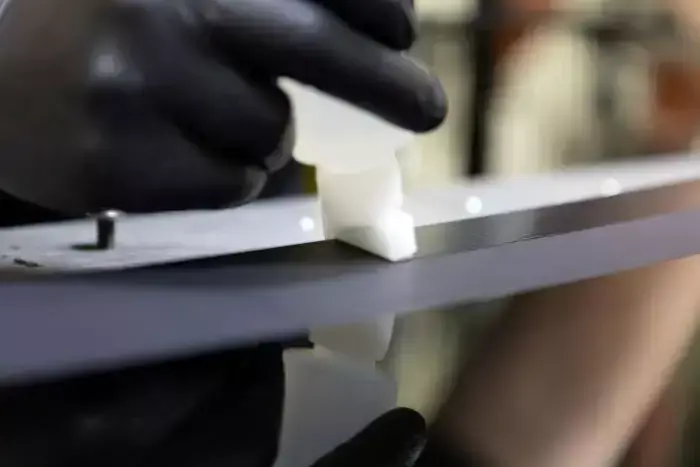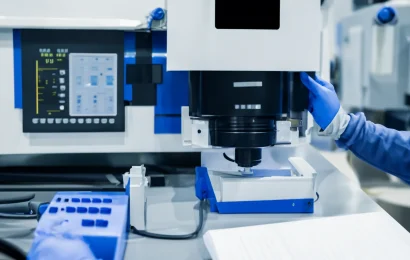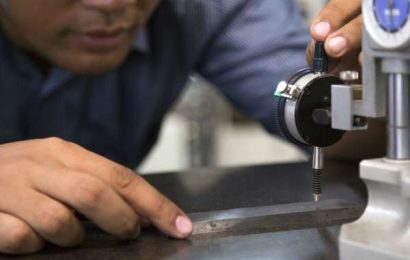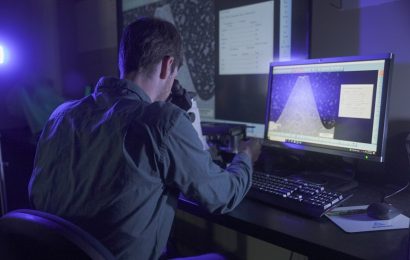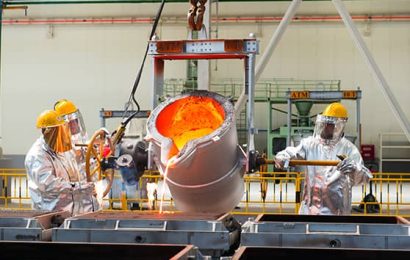In industries where strong, reliable joints are essential—such as aerospace, automotive, electronics, and medical devices—adhesive bonding is a key method for creating secure connections without the need for fasteners. However, for adhesive bonding to be effective, the quality of the surface finish plays a crucial role. At Precision Surfaces International, Inc. (PSI), we understand that achieving the optimal surface finish can significantly enhance bonding performance, ultimately leading to stronger, more durable bonds. This post explores why surface finish matters for adhesive bonding and how to optimize it for the best results.
Why Surface Finish Matters for Adhesive Bonding
The effectiveness of adhesive bonding relies on the adhesion between the adhesive and the substrate surface. For this adhesion to be strong, the surface needs to have the right characteristics, including cleanliness, texture, and mechanical interlocking. Surface finish impacts these factors, which in turn affects bond strength, durability, and overall performance.
A well-prepared surface enhances adhesive “wetting,” or the adhesive’s ability to spread out and make intimate contact with the surface. Rougher surfaces provide more area for bonding, but the roughness needs to be carefully controlled. An overly rough surface can lead to adhesive pooling and weak spots, while a surface that is too smooth may not allow the adhesive to bond effectively.
Key Factors in Surface Finish for Optimal Adhesive Bonding
There are several factors that affect how surface finish influences adhesive bonding, and understanding these can help manufacturers achieve the best possible bond.
- Surface Roughness and Texture
Surface roughness is often measured using parameters like Ra (average roughness) or Rz (mean peak-to-valley height). In general, a moderate level of roughness is desirable for adhesive bonding because it allows the adhesive to penetrate small surface irregularities, creating mechanical interlocking that strengthens the bond. However, the ideal roughness level varies depending on the adhesive and the materials involved.At PSI, we work with manufacturers to identify the optimal roughness for their specific bonding applications, providing high-quality abrasive solutions that produce consistent, controlled surface textures. - Cleanliness and Surface Preparation
Cleanliness is paramount in adhesive bonding, as contaminants like oils, dust, or residues can compromise adhesion. Even slight contamination can prevent the adhesive from making proper contact with the surface, leading to weaker bonds. Surface preparation, which may involve cleaning with solvents or abrasive blasting, is crucial to ensure the surface is free of contaminants and ready for bonding.PSI offers a range of surface finishing solutions that effectively clean and prepare surfaces, allowing adhesives to form stronger bonds. Our tools are designed to remove residues and contaminants without altering the substrate’s integrity, ensuring that the surface is primed for bonding. - Surface Energy and Adhesive Wetting
Surface energy refers to the surface’s readiness to interact with the adhesive. A high surface energy allows for better adhesive wetting, which is critical for bond strength. Surface treatments like plasma cleaning or abrasive blasting can increase surface energy, promoting improved adhesion. Materials with low surface energy, such as certain plastics, may require additional surface treatments to ensure strong adhesive bonding.Our team at PSI provides guidance on selecting the right abrasive solutions and techniques that help modify surface energy to improve adhesion for various materials, including metals, ceramics, and polymers.
Techniques for Optimizing Surface Finish for Adhesive Bonding
Several techniques are available to enhance surface finish specifically for adhesive bonding. Choosing the right technique depends on the material, the type of adhesive, and the required bond strength. Here are some of the most effective surface preparation techniques:
- Abrasive Blasting: This technique uses fine abrasive media to create a uniform, controlled surface roughness, increasing the bonding surface area. Abrasive blasting is effective for metals, composites, and certain plastics.
- Sanding and Polishing: For applications that require smoother finishes, sanding and polishing can provide a precise level of roughness that promotes better adhesive performance. PSI offers abrasive solutions for various levels of roughness and finishing needs.
- Chemical Etching and Plasma Treatments: These methods modify surface energy and increase wettability, making them ideal for materials with inherently low surface energy. They’re often used on materials like aluminum and certain polymers that are difficult to bond without surface treatment.
Applications of Surface Finish in Adhesive Bonding
Achieving the right surface finish for adhesive bonding is essential across numerous industries, each of which relies on durable, high-performance bonds.
- Aerospace: Aircraft structures demand strong, lightweight bonds for efficiency and safety. Surface preparation helps achieve optimal bonding strength for adhesives used in airframe structures, engine parts, and composite materials.
- Automotive: Adhesive bonding in automotive manufacturing is used for body panels, interior trim, and lightweight structural components. Surface finish can impact the bond’s ability to withstand vibration, temperature changes, and environmental exposure.
- Medical Devices: Adhesives are used in medical devices for secure bonding without adding excessive weight. Surface finish is crucial for bonding biocompatible materials, such as metals, polymers, and ceramics, ensuring devices are safe and durable.
How PSI Supports Superior Surface Finish for Adhesive Bonding
At PSI, we understand that effective adhesive bonding requires precision in surface finishing. We provide a wide range of advanced abrasive products and surface preparation solutions designed to meet the demands of adhesive bonding in high-performance industries. Whether your needs involve roughening a metal surface for aerospace applications or polishing a polymer for medical device manufacturing, our solutions are tailored to enhance adhesion quality and durability.
Our expertise extends beyond supplying abrasives—we work with clients to develop optimized surface preparation processes, ensuring that each bond is as strong and reliable as possible. By choosing PSI as your surface finishing partner, you’re investing in quality, efficiency, and superior adhesive bonding performance.
Conclusion: The Impact of Surface Finish on Bond Strength
The strength and durability of an adhesive bond depend heavily on the surface finish. Proper surface preparation not only improves adhesion but also increases bond reliability and product longevity. At PSI, we’re committed to helping manufacturers achieve the ideal surface finish for adhesive bonding, enabling them to produce stronger, longer-lasting products. Reach out to us today to learn how our surface finishing solutions can enhance your adhesive bonding process and set new standards for quality and durability.

